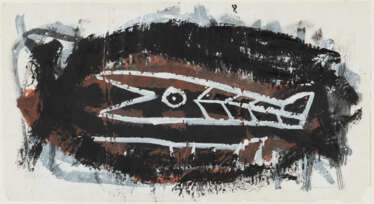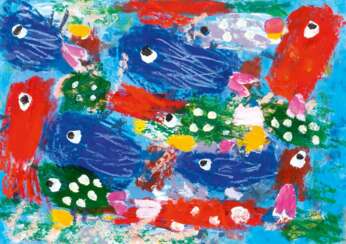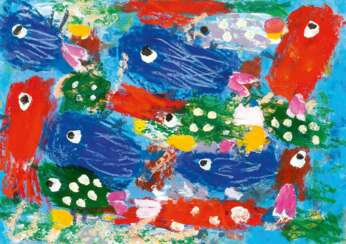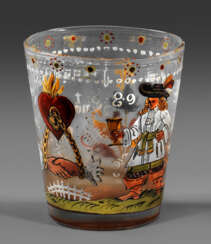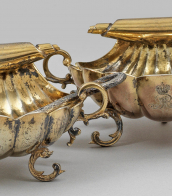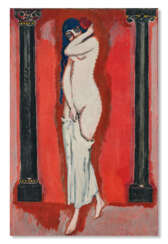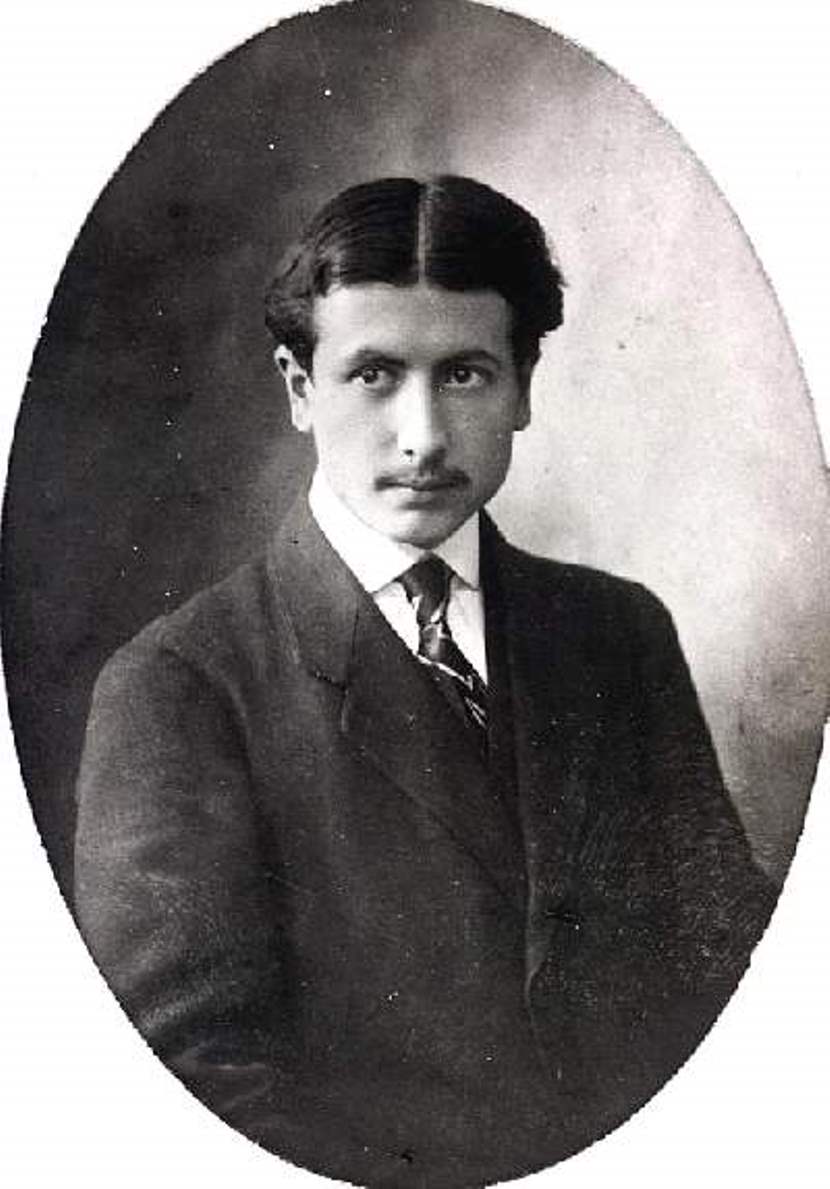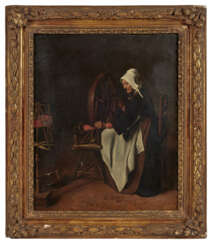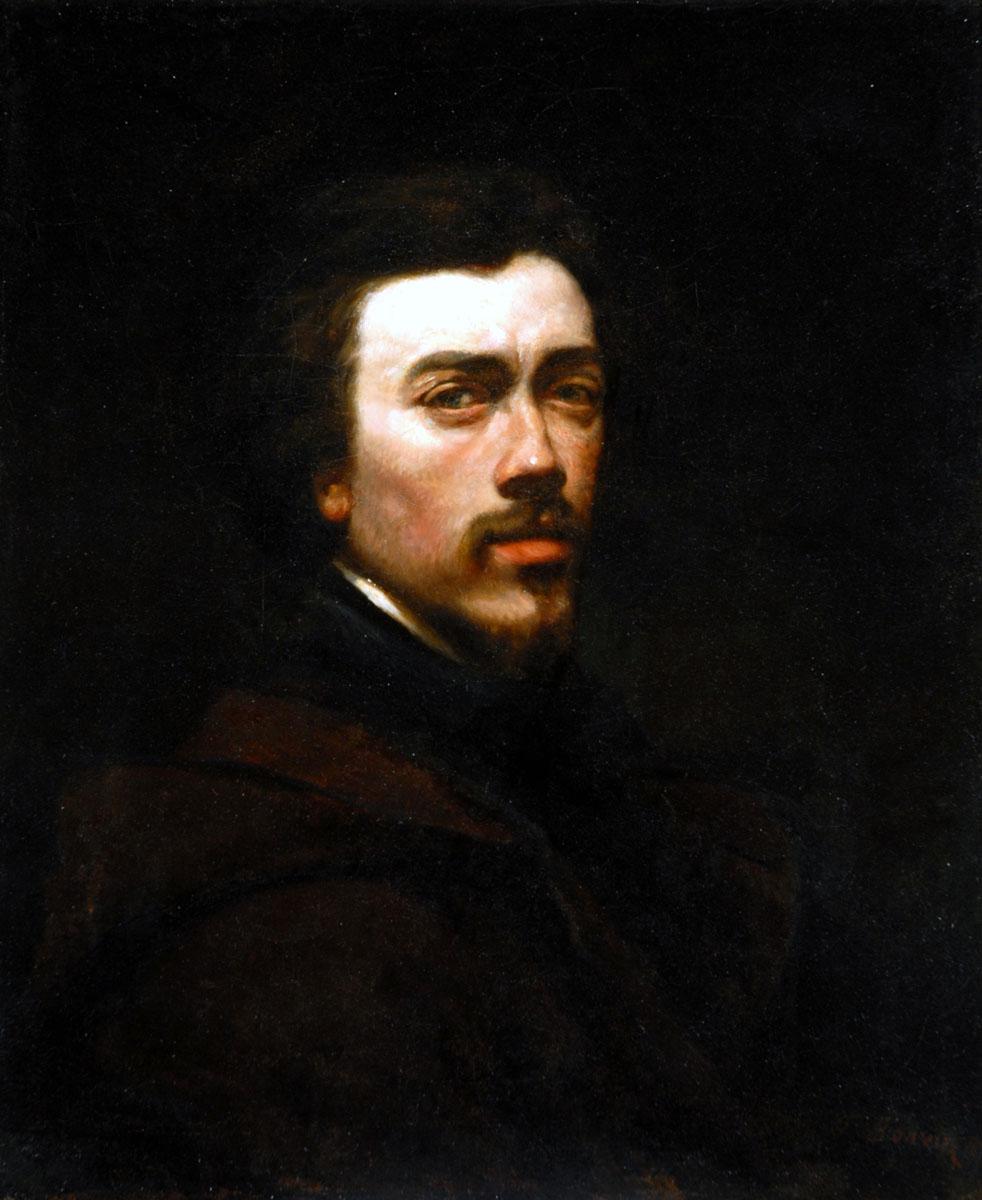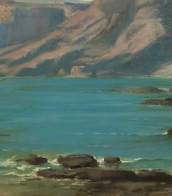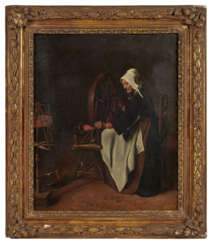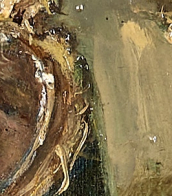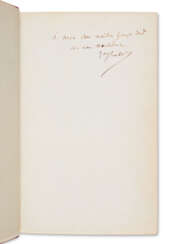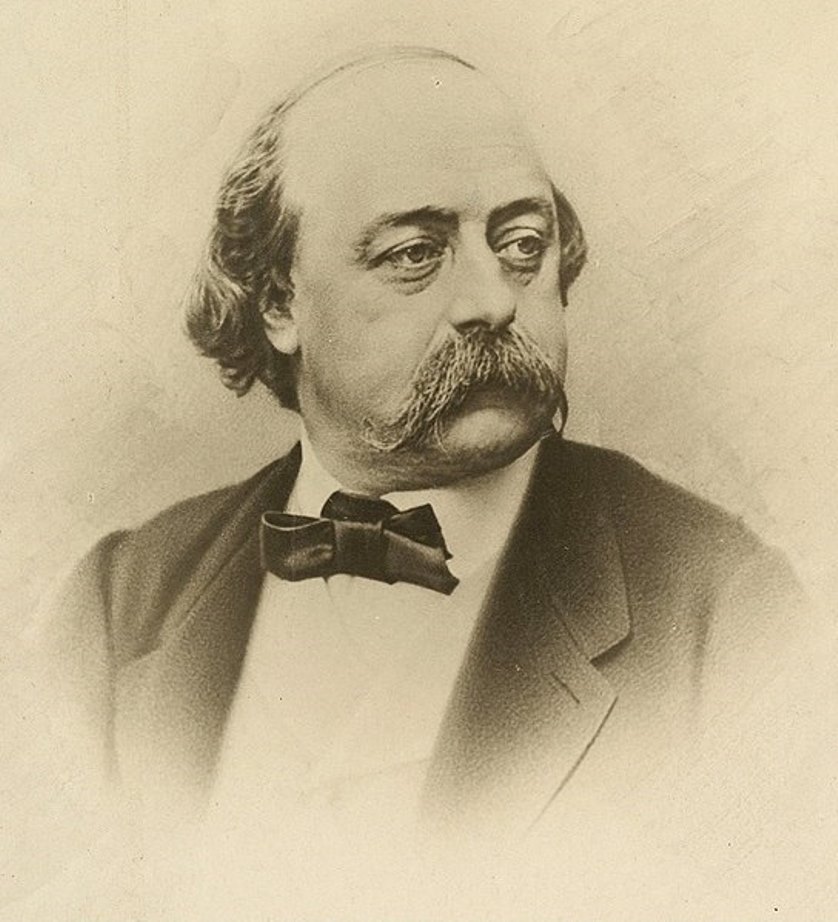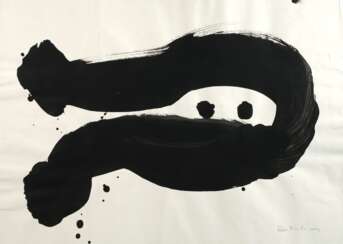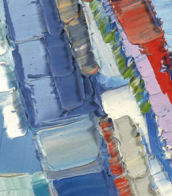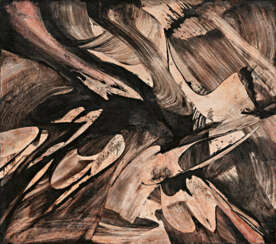eun nim ro
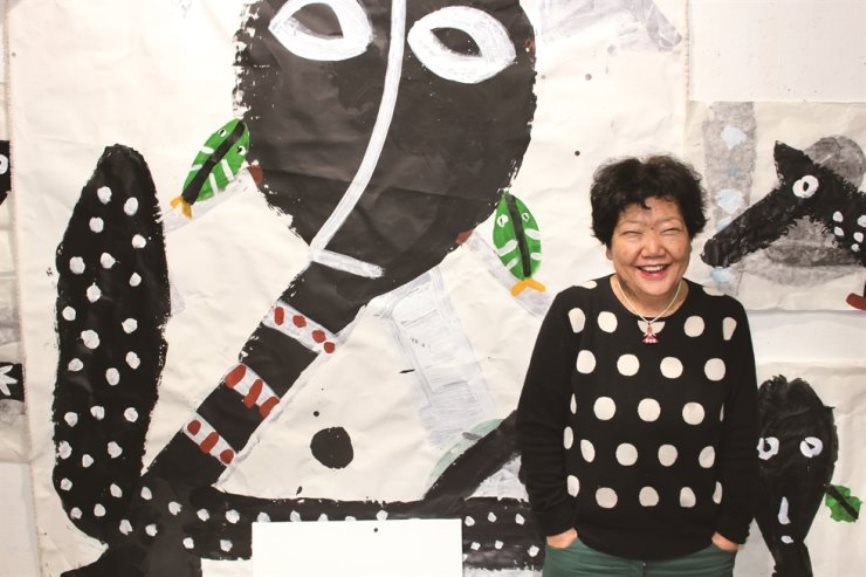
Eun Nim Ro is a South Korean artist who has worked in Germany.
She moved to Germany as a nurse in 1970, where she had the opportunity to exhibit her first works and receive art education. Eun Nim Ro developed an intuitive style of painting that combined Korean brush and ink drawings with the expressiveness of Western art. Naively drawn signs of fish, birds, trees and human figures became the artist's symbols. Eun Nim Ro's creative work is not limited to painting, she has also worked in other disciplines such as performance, calligraphy, painting, ceramics or installation. She has designed the windows of St. Johannes Church in Altona, among others, as well as light walls for government buildings in Seoul.
In 1990, Eun Nim Ro took up a professorship at the Hamburg University of Applied Sciences. In 1995, the artist became an honorary citizen of Seoul, and in 2015 she was also awarded the title of professor in Korea.
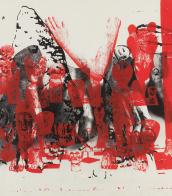

Eun Nim Ro is a South Korean artist who has worked in Germany.
She moved to Germany as a nurse in 1970, where she had the opportunity to exhibit her first works and receive art education. Eun Nim Ro developed an intuitive style of painting that combined Korean brush and ink drawings with the expressiveness of Western art. Naively drawn signs of fish, birds, trees and human figures became the artist's symbols. Eun Nim Ro's creative work is not limited to painting, she has also worked in other disciplines such as performance, calligraphy, painting, ceramics or installation. She has designed the windows of St. Johannes Church in Altona, among others, as well as light walls for government buildings in Seoul.
In 1990, Eun Nim Ro took up a professorship at the Hamburg University of Applied Sciences. In 1995, the artist became an honorary citizen of Seoul, and in 2015 she was also awarded the title of professor in Korea.


Eun Nim Ro is a South Korean artist who has worked in Germany.
She moved to Germany as a nurse in 1970, where she had the opportunity to exhibit her first works and receive art education. Eun Nim Ro developed an intuitive style of painting that combined Korean brush and ink drawings with the expressiveness of Western art. Naively drawn signs of fish, birds, trees and human figures became the artist's symbols. Eun Nim Ro's creative work is not limited to painting, she has also worked in other disciplines such as performance, calligraphy, painting, ceramics or installation. She has designed the windows of St. Johannes Church in Altona, among others, as well as light walls for government buildings in Seoul.
In 1990, Eun Nim Ro took up a professorship at the Hamburg University of Applied Sciences. In 1995, the artist became an honorary citizen of Seoul, and in 2015 she was also awarded the title of professor in Korea.


Kees van Dongen was a Dutch-French painter renowned for his vivid and expressive works that placed him at the forefront of the Fauvist movement. Born in 1877 in Delfshaven, Netherlands, van Dongen's journey into the art world began with his education at the Akademie voor Beeldende Kunsten in Rotterdam. His move to Paris in 1897 marked a pivotal moment in his career, immersing him in the bustling avant-garde scene and connecting him with influential circles, including Pablo Picasso and the Fauves. Van Dongen's art, characterized by its striking use of color and bold brushwork, captured the essence of his subjects with a unique blend of realism and abstraction.
Van Dongen's work evolved significantly over time, initially influenced by the dark tones of his Dutch heritage and the works of Rembrandt. His encounter with Fauvism around 1906 brought a dramatic shift towards brighter, more vibrant colors, marking his most iconic phase. His ability to capture the sensuousness and personality of his subjects made him a sought-after portraitist among the French bourgeoisie and celebrities of his time. Notable works include "Femme aux bas noirs" (Woman with Black Stockings), "Les lutteuses" (Lutteuses du Tabarin), and "The Dancer Anita," showcasing his fascination with the human figure, particularly sensuous depictions of women.
Beyond his remarkable contributions to Fauvism, van Dongen's ventures into illustration and his role as a society portraitist underscore his diverse talents and adaptability to the changing tastes of the art market. His works are celebrated in major collections worldwide, including the Hermitage Museum and the National Gallery of Denmark, affirming his lasting impact on the art world.
Collectors and art experts continue to appreciate van Dongen's work for its bold experimentation with color, form, and the evocative portrayal of his subjects. His legacy lives on as a testament to the vibrancy and dynamism of early 20th-century modern art.
For those keen to explore van Dongen's captivating works further and stay informed about new discoveries, exhibitions, and auction events related to his art, signing up for updates is a must. This ensures direct access to the latest sales and scholarly insights into the painter's rich oeuvre, a valuable resource for collectors and enthusiasts alike.

.jpg)
Arno Breker was a German architect and sculptor who is best known for his public works in Nazi Germany, where they were endorsed by the authorities as the antithesis of degenerate art. He was made official state sculptor, and exempted from military service. One of his better known statues is Die Partei, representing the spirit of the Nazi Party that flanked one side of the carriage entrance to Albert Speer's new Reich Chancellery.

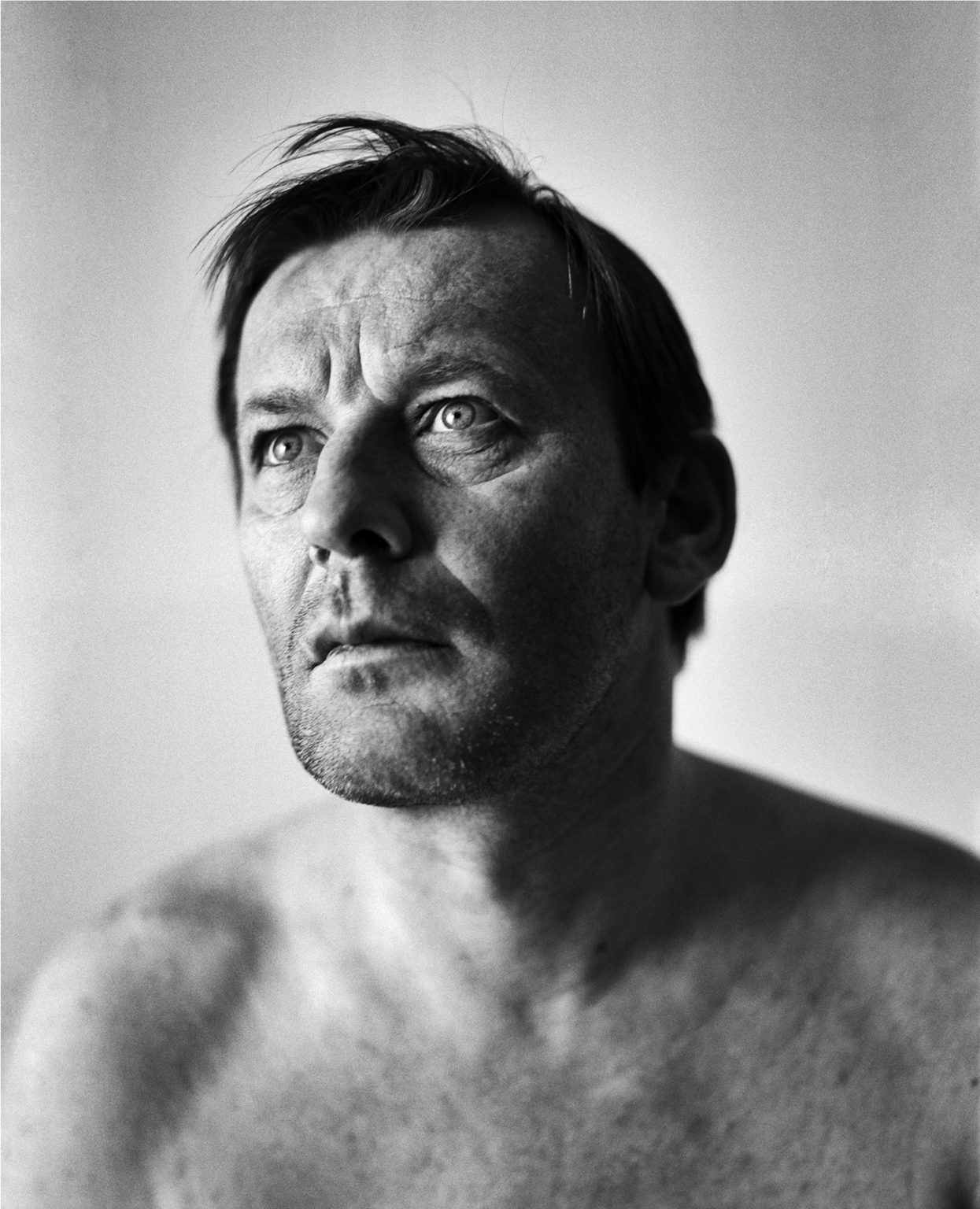
Martin Kippenberger was a German artist known for his extremely prolific output in a wide range of styles and media, superfiction as well as his provocative, jocular and hard-drinking public persona.
Kippenberger was "widely regarded as one of the most talented German artists of his generation," according to Roberta Smith of the New York Times. He was at the center of a generation of German enfants terribles including Albert Oehlen, Markus Oehlen, Werner Büttner, Georg Herold, Dieter Göls, and Günther Förg.


Karl Otto Götz was a German artist, filmmaker, draughtsman, printmaker, writer and professor of art at the Kunstakademie Düsseldorf. He was one of the oldest living and active artists older than 100 years of age and is best remembered for his explosive and complex abstract forms. His powerful, surrealist-inspired works earned him international recognition in exhibitions like documenta II in 1959. Götz never confined himself to one specific style or artistic field. He also explored generated abstract forms through television art. Götz is one of the most important members of the German Art Informel movement.

